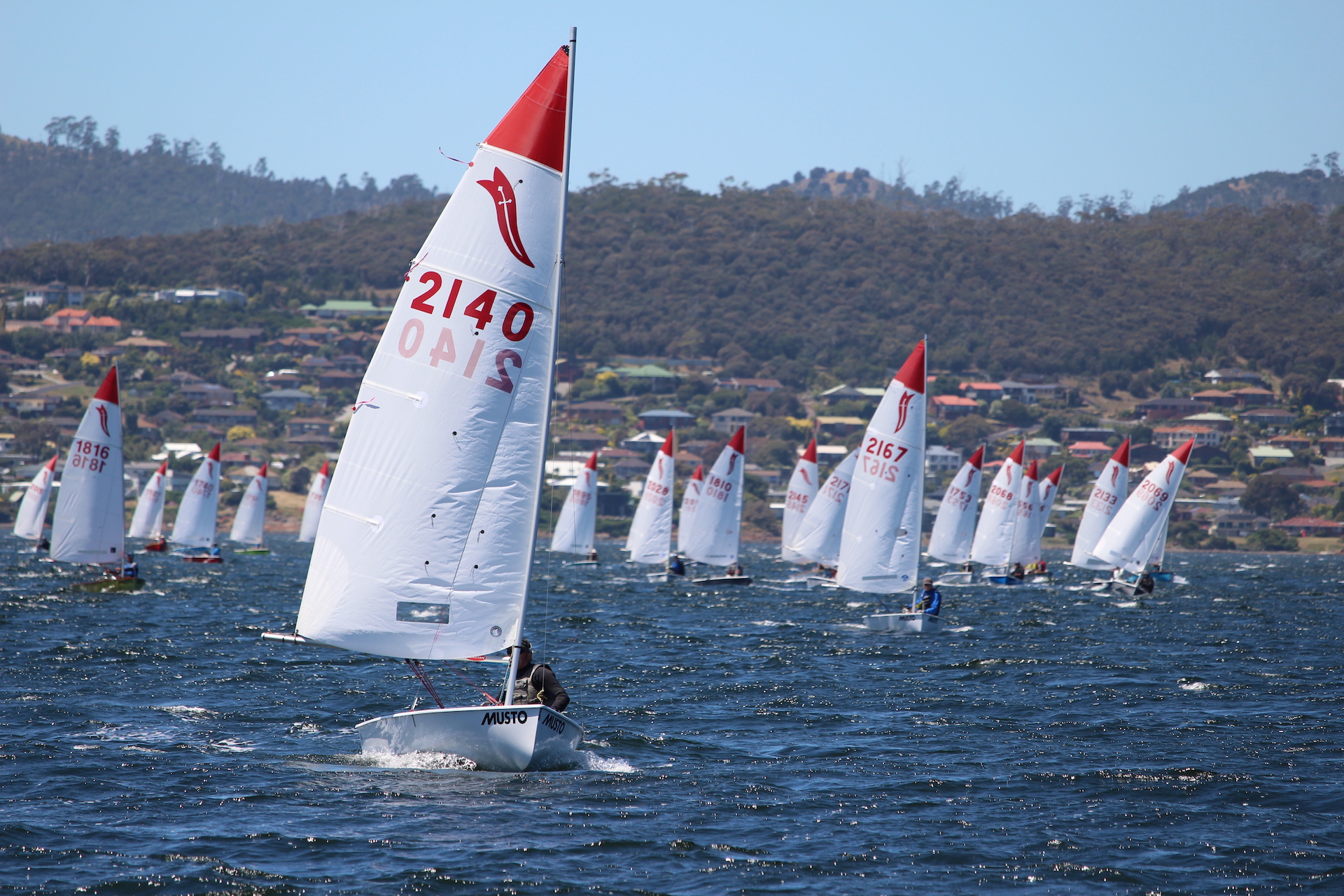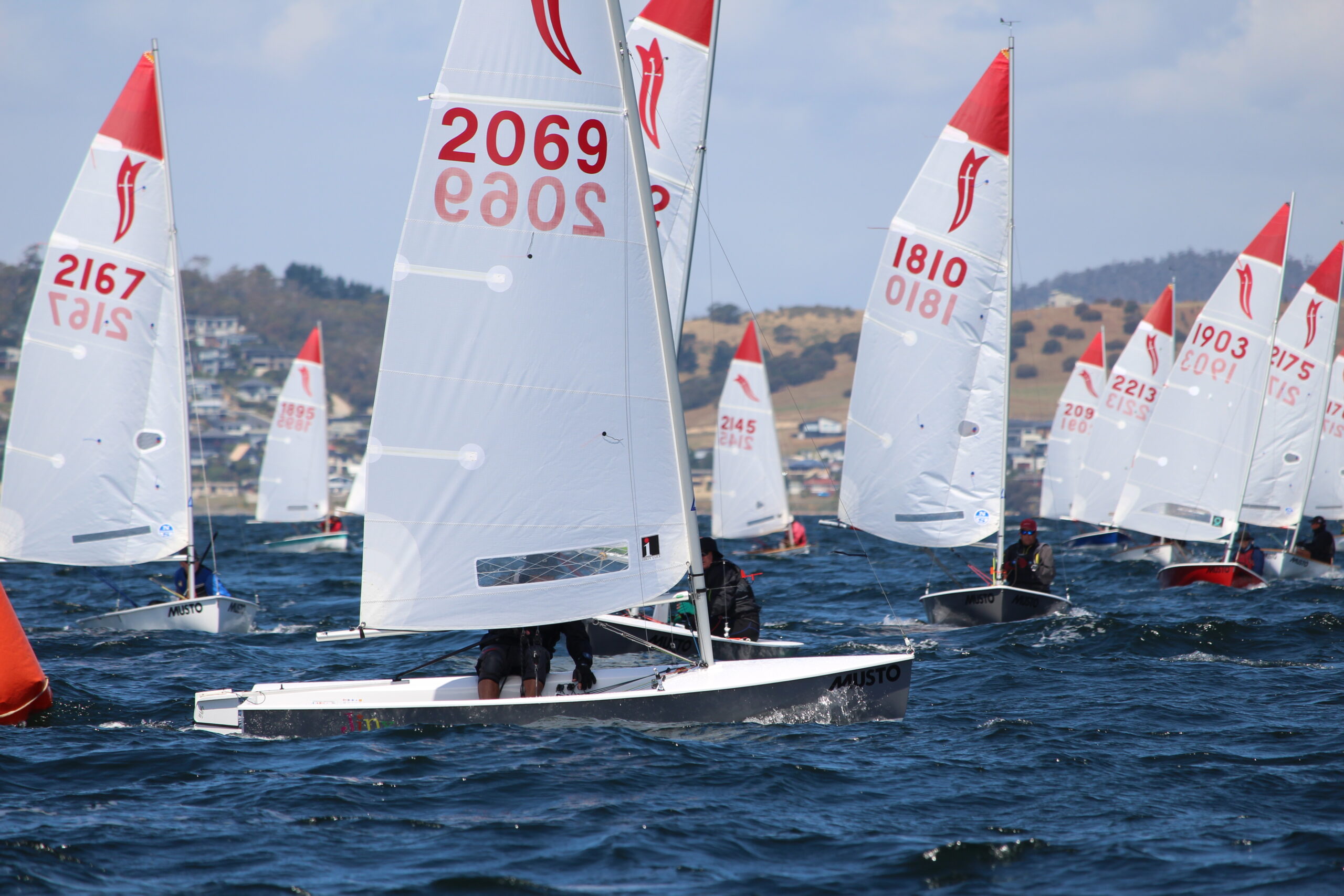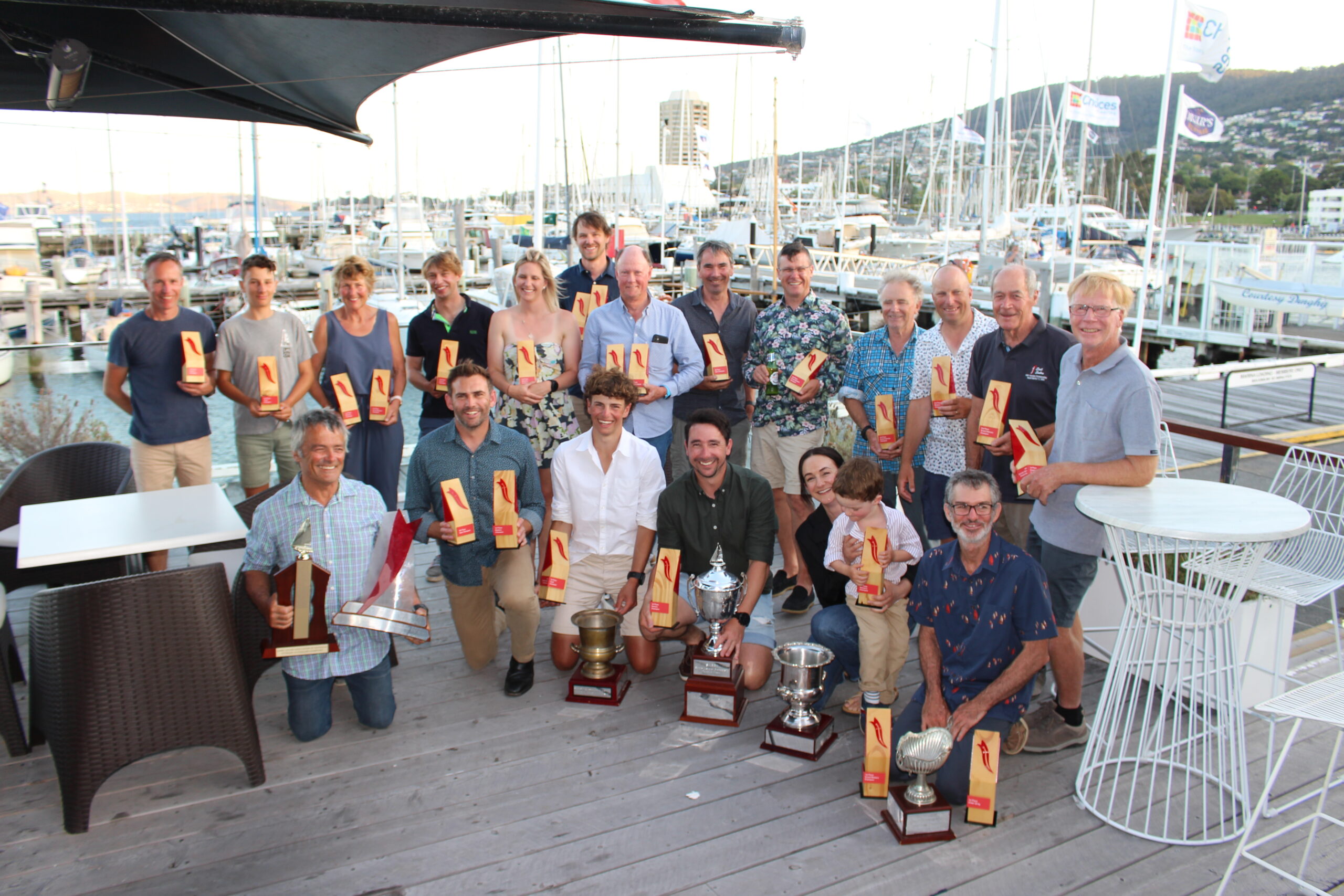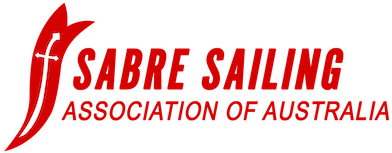


With the 2022/23 sailing season drawing to a close it is worth reflecting on the recent progress of the fleet in Australia. All states have now completed successful state championships; the national championships held recently in Hobart were extremely enjoyable and well attended and club racing is spread through many locations.
Despite competition from other classes and sports, new Sabres continue to emerge and class numbers grow. Indeed, our major regattas attract significant numbers. The Victorian championships fleet of 80, was said to be the largest fleet of one design dinghies in Australia. Sabre Sailing at local clubs have evidenced growth in fleets ranging from a few boats up to more than 40 Sabres. Many sailors have turned to the Sabre to gain experience in big fleets without the need and expense of travelling regularly overseas.
The Sabre may not necessarily appeal to all; it does not enjoy the status and symbolism of an international class (mind you our National Secretary reliably informs me Sabre building kits have been sold to many distant parts of the globe) nor does it boast a range of sail sizes, nor exotic build materials and techniques. So, what does it possess? It does attract a broad range of ages (15 to 80 plus years of age), crew weights (normally 60 – 85kg) and blend of gender (often in excess of 20% female sailors comprise the cohort). It certainly doesn’t possess Hollywood style gym junkies with stars in their eyes as skippers and while the Sabre may appear to be underpowered in light breezes, this in turn does develop special skills (patience and mental resilience being but two). At the other end of the spectrum, the boat is without peer in strong winds and big wave conditions. It is a comfortable and forgiving boat, and as many aspiring winners can attest ‘easy to sail, – difficult to sail fast’.
Sabre measurement rules have been progressively amended over the years with agreement from all state representatives, to allow the use of newer, low cost materials and simplified methods. Underpinning this approach is to ensure that older boats with competent sailors can compete successfully against those built recently. Sabres are built in Australia both professionally and by DIY builders. Maybe Sabres are visionary – it’s about evolution, not revolution, it’s good to be leading edge but there are dangers in being bleeding edge.
When all the above is considered, there is one aspect of the Sabres that is striking. It is clearly not the revolutionary technology operated by raw-boned athletes dressed in outfits from a Dwayne Johnson set that ensures the Sabre success. The recipe for success appears to be less science and more craft. The ‘Sabre Culture’ is often mentioned, and I suggest the interesting thing about culture is that it is exceedingly difficult to measure. What I have learnt is that it is only one of two things. It is either good or it is bad. Significantly and unequivocally this amalgam of inclusion, contributing, sharing, listening, encouraging, coaching, enjoying and competing, but not at all costs is a culture developed and nurtured by all in the Class. We enjoy Sabre sailing and fortunately have attracted a great bunch of people who are similarly passionate about the class. Long may that continue.
Yours in sailing
Russell Rooney
President, Sabre sailing Assoc of Australia
